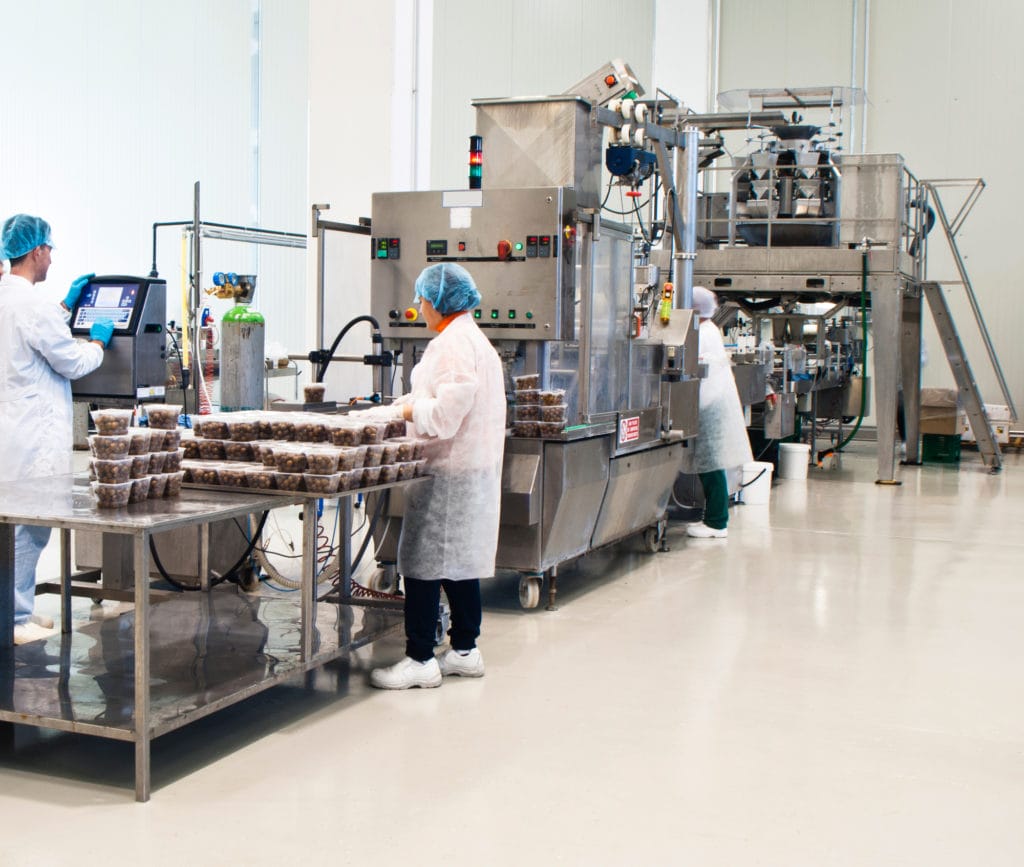Innovations are changing the way the food industry operates. The U.S. Food and Drug Administration (FDA) points out that tech-enabled food tracing and smart systems can predict contamination, assess risk, and quickly find the source of a food-borne outbreak and contain it.
Meanwhile, the National Institute of Standards and Technology (NIST) points to automation and robotics in food manufacturing as a way to enhance efficiency, improve processes and quality, and reduce human error leading to waste and contamination. The agency also mentions that this efficiency, combined with waste reduction and new trends in recycling, can improve the sustainability of the food production process.
For producers and consumers, the most important result of these innovations is the improvement of food quality. Here is a look at eight different ways emerging tech impacts food quality.
Alternative Proteins
The Good Food Institute defines “alternative proteins” as protein produced by plants or a fermentation process. The non-profit think-tank also includes new products, such as meats derived directly from animal cells (known as cultivated meat) in this category. These products require fewer resources like land and water than traditional livestock-based meats. They also produce fewer greenhouse gasses.
The popularity of products like Impossible Meat, which uses soy, yeasts, oils, and other ingredients to mimic the taste of meat, make it seem like demand for these alternatives is rising.
Projections back up this assumption. One study forecast that the alternative protein market, including whey, pea protein, soy, and insect-based products, will enjoy a 10.1% compound annual growth rate (CAGR) and be worth $33.75 billion.
The Good Food Institute mentions cultivated meats, produced using animal cells. On a cellular level, these products are the same as traditional meat, except they do not come from an animal. More research is necessary before this protein alternative is ready for mass production.
Fermented protein, including soy-based products such as tempeh, is another area of advancement. Precision fermentation can provide plant-based proteins with specific flavors or nutritional traits, making it a promising area for developing meat alternatives for mass production.
Smart Sensors
Radio frequency identification (RFID) sensors can help producers track conditions in every step of the food production process. From growing to packaging to transportation and storage, sensors measuring temperature and other factors can ensure freshness. Producers can monitor conditions in real-time and get alerts when they do not fall within predefined parameters for optimal food storage.
Other products can reduce food waste and increase safety without tech. For example, paper-based electrical gas sensors (PEGS) can detect the gasses released by food when it spoils. Consumers or grocers can use smartphone-based readers to see the results from the PEGS.
On an industrial level, gas sensors can measure the reactions of food products to their environment. They can detect fruit and vegetable ripening, meat spoilage, humidity, and fermentation.
Personalized Nutrition Delivery Systems
Personalized nutrition uses data from individuals to create a nutrition plan. In addition to health history, these systems take a person’s habits and biomarker information into account. Rather than following a generic diet plan, someone can get specific nutrition information and use it to learn exactly what you need to consume to get the desired results.
Some meal and nutrition delivery services create diets based on blood sugar, gut microbe reading, and other factors. Customers collect the samples and mail them to the company, which then provides meals based on the test results of the samples.
Increased Use of Fermentation
Fermentation shows promise in the alternative protein sector, but the practice is already influencing other aspects of the food industry. Kombucha is one example of a trending fermented product. The tea drink, fermented with a culture of yeast and bacteria, has become increasingly popular, earning a $1 billion share of the beverage market in 2021. Researchers project a 16.2% CAGR in the coming decade.
People consume kombucha for gut health and general wellness benefits. Other fermented foods, from cabbage-based kimchi to milk-based kefir, are recognized for their health benefits. The healthy buzz surrounding these foods is primarily linked to the presence of probiotics, which improve gut health and ensure a population of beneficial bacteria within your body.
Today, food producers have more control over the fermentation process. They can use genome editing and microbiome engineering to create specific cultures to start the fermentation process. With the right amount of specific enzymes and bacteria, along with carefully-measured conditions, the manufacturers can ensure proper fermentation and avoid rot or poor flavors as the product ages.
The Internet of Things
The internet of things (IoT) describes tools and equipment combined with computer hardware. Usually, IoT devices have sensors that transmit information via the internet or a cellular data network. The data streams to a central computer, control panel display, or dashboard in real-time.
IoT systems can bring several benefits to restaurants, their suppliers, and other food service operations. In addition to managing conditions during shipment, delivery, and onsite storage, restaurants can use IoT devices to monitor inventory by weight or usage and order supplies as needed to reduce excess food that could lead to waste.
Finally, other smart kitchen sensors can ensure consistency in oven temperature, cooking time, and other factors to help staff deliver a consistent level of quality for each dish.
Increased Use of Automation
Automation is affecting every aspect of the food production industry. Automated picking machines, computer-controlled irrigation, and remote field monitoring can all ncrease efficiency, reduce labor costs in the long term, and limit risks like a lack of workers due to a pandemic or other factors.
Automation can also increase safety in warehouse and food-production facilities. For example, automated equipment can handle heavy lifting and loading tasks and work in cold environments like freezers for a 24-hour cycle.
The most noticeable use of automation for consumers is in the grocery industry. Self-checkout systems contain both price-scanning and security sensors to ensure customers scan each item in their care.
Sustainability Efforts
Sustainability efforts in the food industry can happen on different levels. For example, zero-emissions farm equipment and transport can reduce local pollution and overall carbon emissions, which contribute to global warming.
Finally, locally-produced food enhances sustainability by reducing carbon emissions produced by shipping, processing, and storage. It also helps consumers get access to fresher foods that haven’t lost nutrients due to long storage periods, and it allows them to support local businesses. Customers appreciate eco-friendly operations, and businesses can connect to their community by making them a priority.
Technology, such as smartphone apps, allows consumers to find local producers without requiring businesses to engage in expensive advertising campaigns. Also, even without expensive equipment, small local farms can use available tech to improve operations. Examples of these innovations include data analysis software to help with seed planning and in-field sensors to monitor crops and minimize water and fertilizer use.
Food Storage and Safety Trends
New packaging and storage techniques help food remain safer and fresher for longer. These developments reduce food waste and limit potential liability for food producers. An example of this is isochoric freezing, which uses pressure to create a thermodynamic equilibrium that freezes food in a liquid solution without forming ice crystals.
Also, rather than relying on traditional packaging, food producers are exploring nanotechnology options. Organic nanoparticles can combine to increase food shelf life and safety, cutting down on waste and reducing the amount of packaging compared to plastic and other non-biodegradable materials.
Combined with sensors and smart labels, innovation in relation to packaging and storage can reduce liability for food businesses of all sizes. Catering insurance, restaurant insurance, and coverage for farmers market vendors can further limit liability for small food businesses and producers, positively affecting their bottom line.


